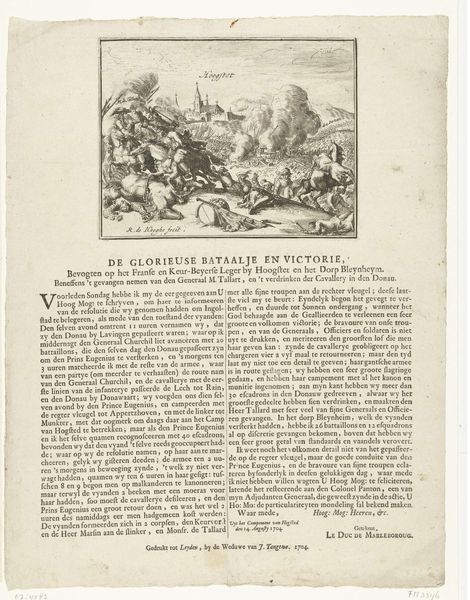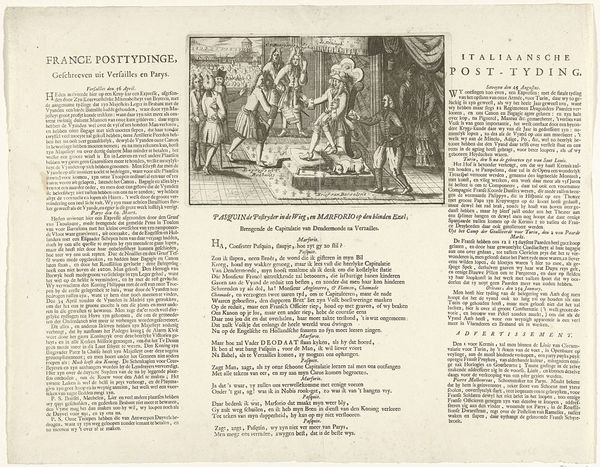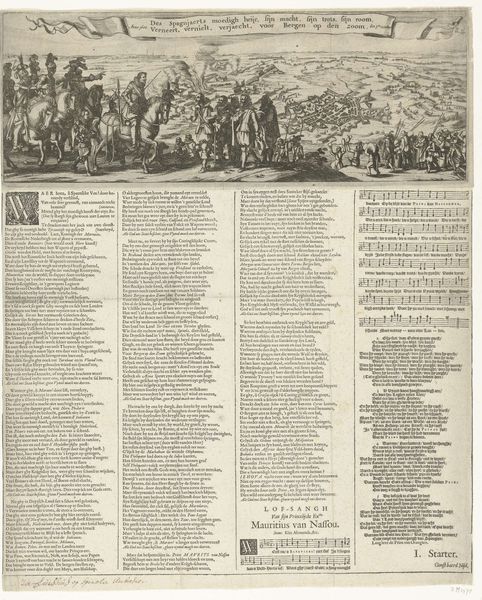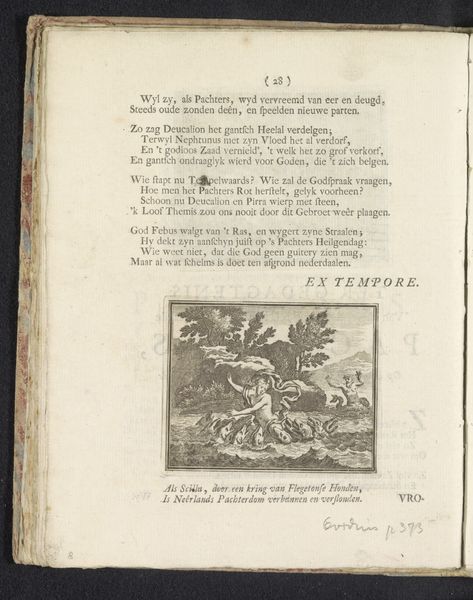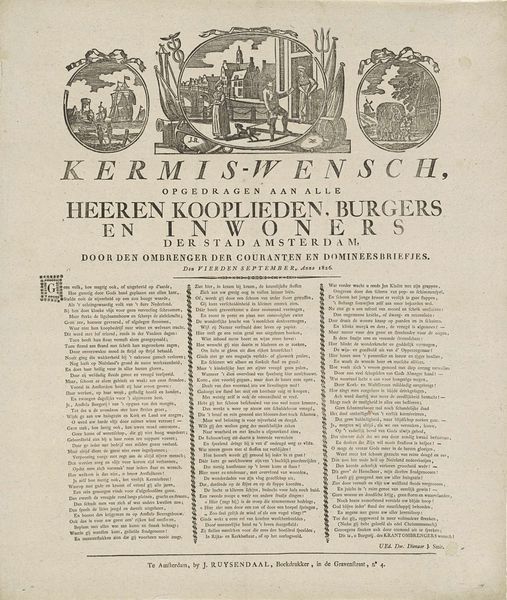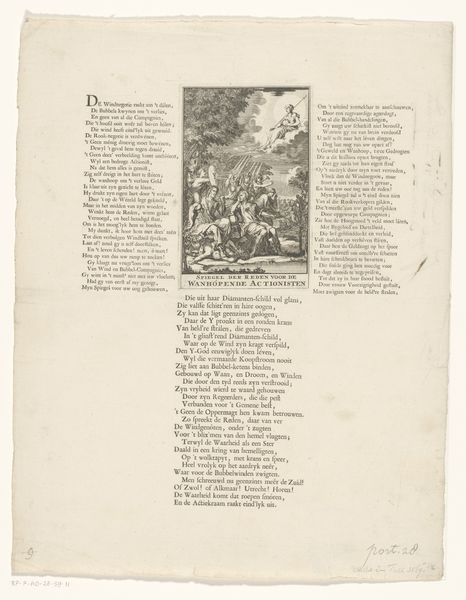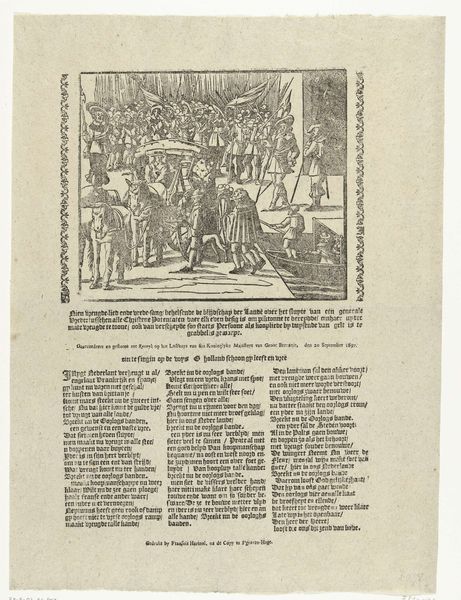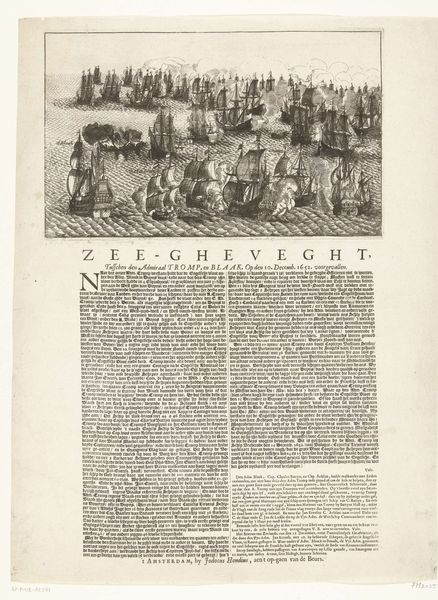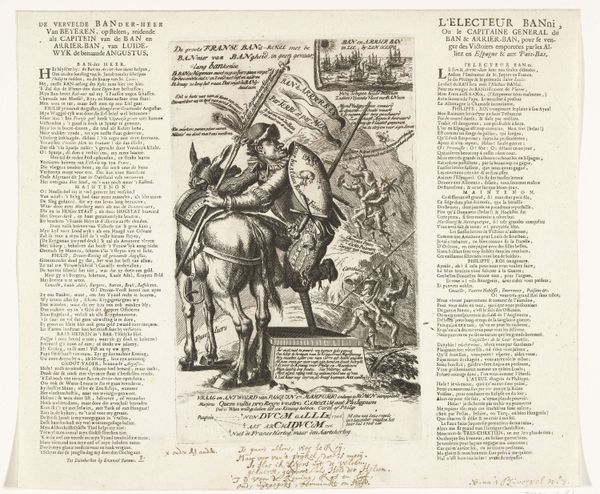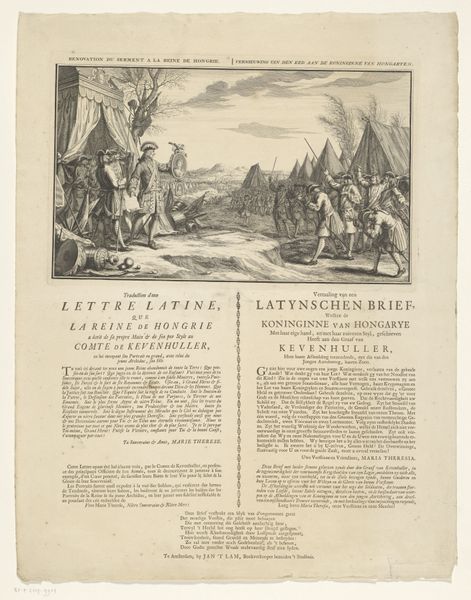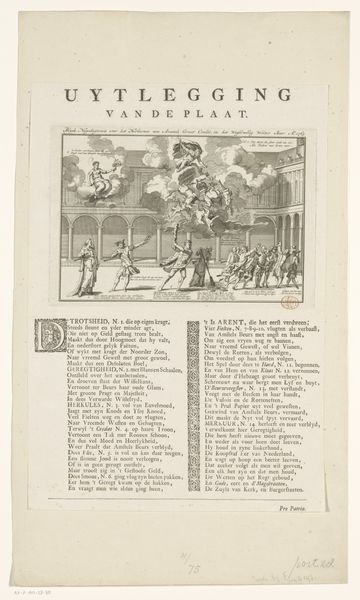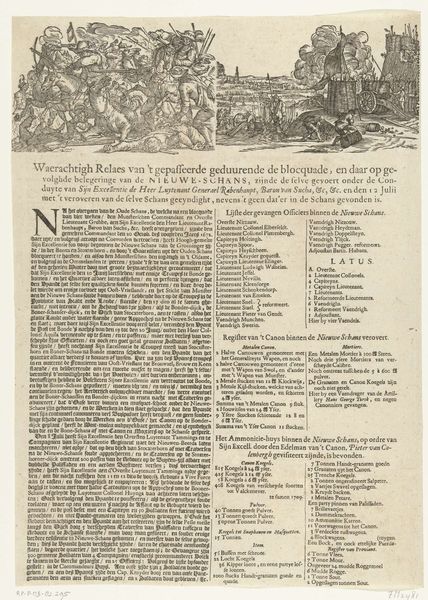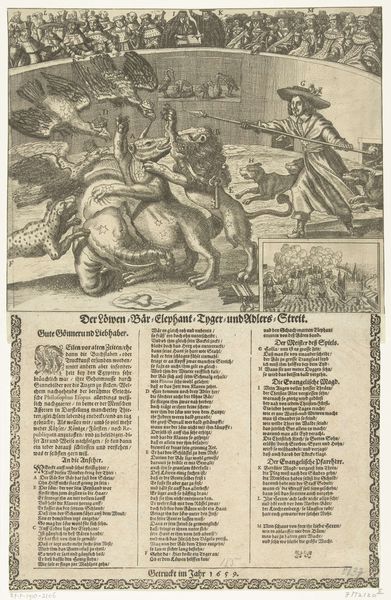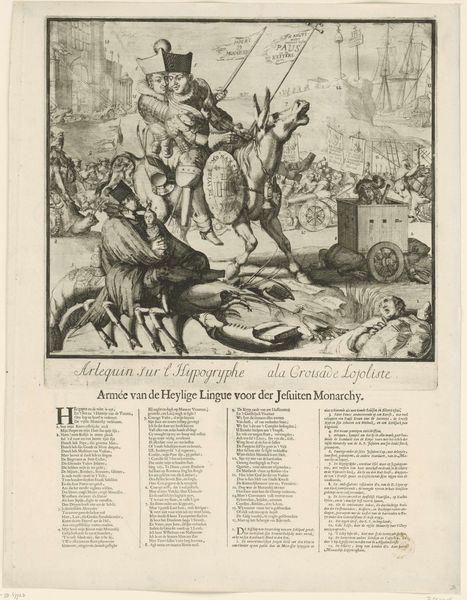
graphic-art, print, paper, engraving
#
graphic-art
#
baroque
# print
#
paper
#
history-painting
#
engraving
Dimensions: height 410 mm, width 320 mm
Copyright: Rijks Museum: Open Domain
Curator: Let’s turn our attention to "Allegory of the Victory at Höchstädt, 1704," a print made by Romeyn de Hooghe in, unsurprisingly, 1704. Editor: Oh, wow. My initial impression is of layered chaos! It feels very…baroque in its density. So much is crammed into that small space above the text. What story is this chaos telling? Curator: Well, on a material level, being a print made on paper meant this image could be reproduced and widely distributed, serving a propaganda function, really solidifying the Dutch Republic’s perspective on their victory. Editor: Right, it's pure political theatre! Looking at the figures depicted – that triumphant procession is literally riding over vanquished foes. How does it play into the national narrative? Who does this 'victory' really serve? Curator: The social context here is crucial. This print lionizes the Dutch Republic and its allies. We see symbolic figures representing victory leading the charge. It’s meant to inspire patriotic fervor, suggesting Dutch dominance on the European stage during the War of the Spanish Succession. Editor: I wonder, who were the consumers of such propaganda, and did it actually reinforce unity across diverse social groups or merely amplify the elite's agenda? Were marginalized voices excluded or manipulated? Curator: It was strategically disseminated through popular press to instill confidence and unity in the populace—but, undoubtedly, crafted through the elite’s lens to solidify their own power. The consumption of such imagery was certainly complex and unevenly distributed. Editor: This piece becomes more unsettling, then. It exposes how easily narratives can be manufactured and consumed to serve specific power structures during times of conflict. Curator: Indeed. Studying its material production reveals the infrastructure supporting the political aims. It bridges high art, with its allegory and symbolism, and the practical matter of maintaining power dynamics. Editor: It's sobering to consider how a single image could reflect so many layers of political strategy, cultural ambition, and potential social manipulation. This "Allegory" offers quite the cautionary tale. Curator: Absolutely, it serves as a compelling lesson on how art can function both as an aesthetic object and as a powerful tool for shaping collective consciousness.
Comments
No comments
Be the first to comment and join the conversation on the ultimate creative platform.
